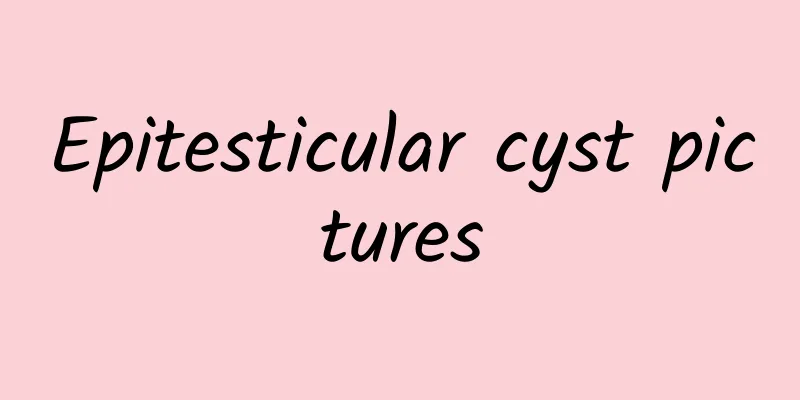Epitesticular cyst pictures

|
Epididymal cyst is also known as spermatocele, and the onset age is 20 to 40 years old. Epididymal cyst is a cystic, painless or mildly painful, sometimes accompanied by a feeling of falling down, scrotal mass containing male sperm and fluid. Epididymal cyst is an enlarged lump on the epididymal cyst, which is hard, smooth, and contains yellow fluid, but is hard and tender when touched. It can appear on one side or both sides and varies in size. The most common location for epididymal cysts is the head of the epididymal cyst, while the body and tail rarely occur. It originates from the squamous epithelial cells of the efferent ductules of the male rete testis, with diameters ranging from mm to several centimeters. It can be a single cystic cavity or separated by two cavities, but it is more common to have a rotating cavity. The cystic fluid often contains sperm. The clinical symptoms are mostly a feeling of scrotal pain, no specific discomfort, and the disease is relatively late. A ring-shaped or oval mass can be touched at the head of the epididymal cyst, with a smooth surface, no tenderness, and a charming cystic feel. It has a clear boundary with the surrounding tissues and no adhesions. The cause of the disease is not very clear yet. It may be related to sexual stimulation, chronic infection of the epididymis, or partial obstruction of the duct that transports sperm. However, clinical nursing has confirmed that patients do not develop cysts after vasectomy, which shows that the obstruction theory is not established. Its occurrence may also be related to local damage or genital tract infection. Some people have also proposed that the epididymal duct at the head of the epididymal cyst is tortuous, turns into or produces a diverticulum. With the passage of time and the continuous deposition of sperm, the diverticular tubules continue to expand, thus producing spermatocele. Spermatocele can also occur when the epididymal cyst is blocked or scarred due to inflammation or trauma. The treatment of spermatocele is not difficult. If the volume is not large, it is discovered by accident during self-examination or routine physical examination, and there are no symptoms, no treatment is required. If the spermatocele causes symptoms or becomes the root cause of the patient's anxiety, it should be surgically removed. The previous strategy of simply draining the fluid and introducing a sealing and curing agent to reduce the size of the cyst is not reliable, and it can often cause recurrence or infection, making future surgical treatment difficult. Therefore, surgical removal is now more popular. |
<<: Can epididymal cysts become cancerous?
Recommend
How can left-sided testicular inflammation be cured?
I believe that all male friends have a certain un...
White spots on the glans
White spots on the glans of a man may be pearly m...
Can boys have children?
Childbirth is accomplished by women through ten m...
The five most vulnerable parts of men to disease
The No. 1 Weakness of Men’s Body: “Prostate” Acco...
Causes and sequelae of tibia and fibula fractures.
Many people suffer fractures during sports or oth...
What's a good birthday gift for a man?
Today's society is based on favors, and gift-...
What causes spermatorrhea in middle age?
If a man often has frequent spermatorrhea, for ex...
Prostate Stone Surgery
I believe most people have heard of prostatitis i...
What should I eat to supplement my low sperm count?
The quality of sperm directly affects a man's...
People who lack confidence must read these three methods to effectively enhance their confidence
Self-confidence is a prerequisite for a man's...
The dangers of various types of glansitis
Male friends are most worried about their male ge...
Pimples on the skin under the penis
Nowadays, many people do not pay enough attention...
What to do if your nipples are itchy? Treatment for itchy nipples in men
Many people think that breast health and care are...
How much does it cost to check kidney function?
Nowadays, people's living standards continue ...
What medicine should I take if my penis is not hard?
For men, a weak penis is really a self-esteem iss...









